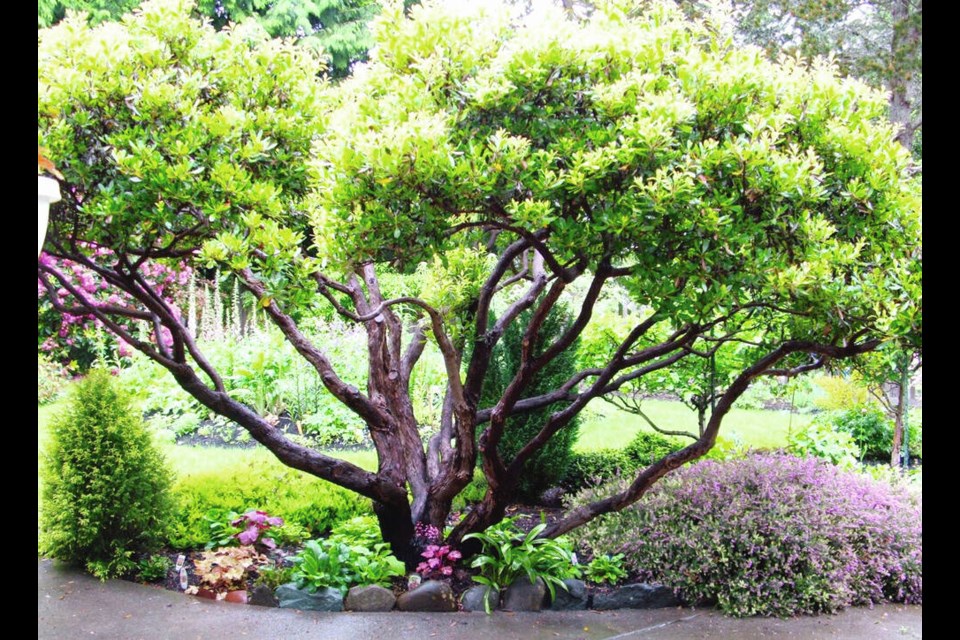Dear Helen: My family is still in the process of planting our first vegetable garden. From reading your column, I gather that you have a more extensive area than we do for planting food crops. How do you decide on what vegetables, and how much of each, to plant?
F.E.
I don’t have a really extensive area for the food garden. I started out with ample space, but I’ve had to reduce the vegetable growing area as the young forest surrounding part of the property has grown and sent hungry feeder roots through most of the garden.
I’ve adapted by investing in lengths of wire fencing to support peas, runner beans, cucumbers, climbing zucchini and staking tomatoes grown vertically in a minimum or space. Small salad vegetables can be grown close to and alongside the climbing vegetables, taking up little space.
Instead of seeding in individual rows, I grow all but the largest plants in closely spaced blocks. This works well as long as the soil is fertile and well plumped with compost. This way, I can grow surprisingly hefty numbers of carrots and beets in a small space, and a year’s supply of garlic as well.
I locate winter squash plants on partly finished compost heaps and along plot edges to trail onto adjacent pathways.
I grow the most of what I like the best. I aim for close to a year’s supply of peas, to enjoy them “minted” after I’ve steam-blanched them for the freezer with fresh mint in the boiling water beneath the peas. I grow enough tomatoes for soup and sauces through the winter, and enough zucchini for cooking with onion and garlic and pureeing for winter soups.
I grow close to a year’s supply of carrots to be sure of having sweet, juicy, fine-textured carrots through the winter. For a similar reason I try to produce enough sweet Kelsae onions to see me at least into early spring. It’s not always easy to find juicy, mild onions to buy in winter.
Dear Helen: I’ve heard a broad range of conflicting opinions on how to train and prune a strawberry tree I’ve been given. Your advice?
I.D.
This versatile plant has a naturally rounded shape. It can be grown in tree form with a single trunk or allowed to develop as a multi-stemmed shrub. It can be trimmed neatly, or left to range free.
Following a heavy snowfall that broke several branches on my long-established strawberry tree (Arbutus unedo), after removing the broken limbs I decided to maintain the plant in a sort of bonsai form with the lower limb parts kept bare beneath a broad, flattish canopy of foliage. It’s a form that reveals the attractive limbs and allows me to see through to the front garden and the street from my office.
Dear Helen: How late can I seed zucchini indoors for transplants that will have time to yield a decent harvest before the cold weather? We’ll be away for the rest of June and for the first week in July. We have seeds for several varieties, and zucchini fresh from the garden is something we relish.
J.M.
I routinely make a second, summer indoor sowing in early July for young plants to set out in late July or early August for harvesting in September and October, when spring-sown zucchini plants are coming down with powdery mildew on their older leaves.
Seed when you return home. Check the seed packages you have for the “days to maturity” number. That number gives a relative indication of the time it will take from planting to harvest. For zucchini, the number is from transplanting.
Zucchini varieties can differ widely in their days to maturity. For the July seeding, choose ones that indicate the shortest time to harvest.
GARDEN EVENT
Pollinator plants. The Horticulture Centre of the Pacific, 505 Quayle Rd. in Saanich, is holding a Pollinators for the Planet plant sale on Saturday, 9 a.m. to 2 p.m. This new sale will feature pollinator friendly plants rich in pollen and nectar. From 12:30 to 1:15 p.m. Lori Weidenhammer, author of Victory Gardens for Bees, will present “Let’s Get Buzzy!: Identifying, Supporting and Celebrating the Native Bees of British Columbia.” The presentation is free, but space is limited. Register ahead at hcp.ca/events or call 250 479 6162.. Masks are required for this indoor event.



